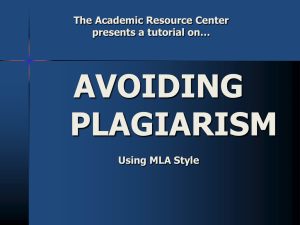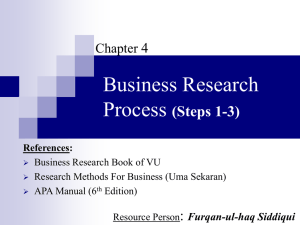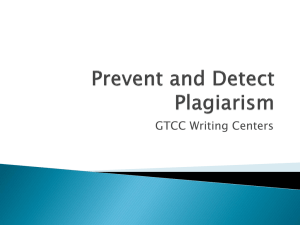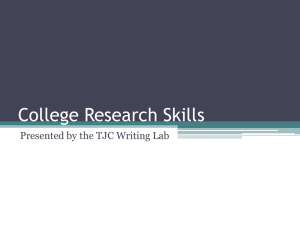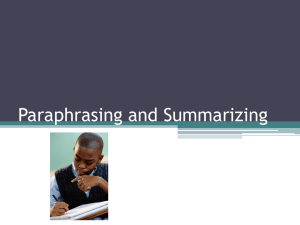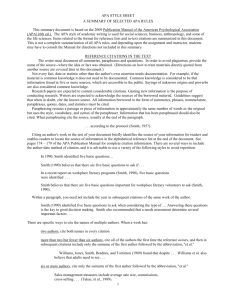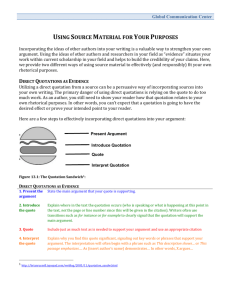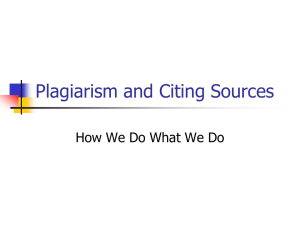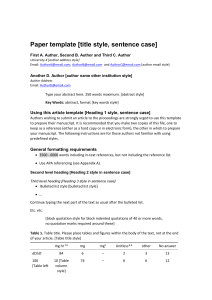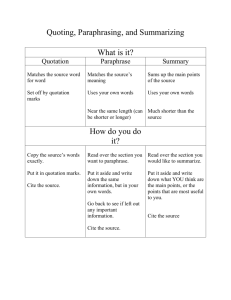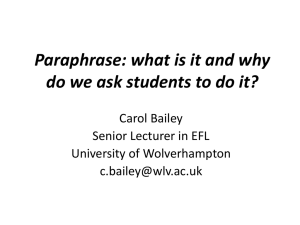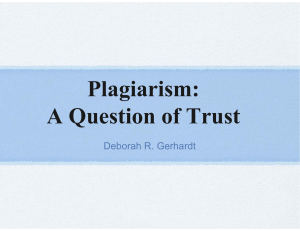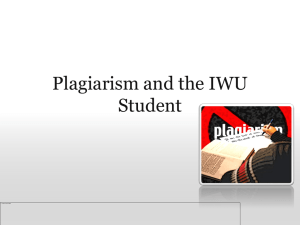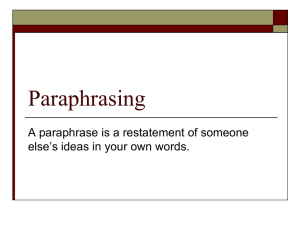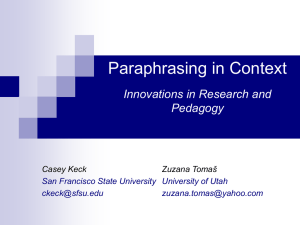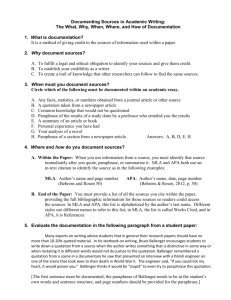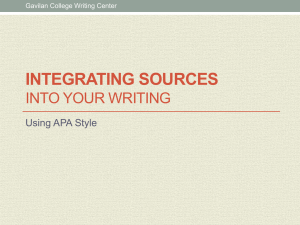APA+Citing+and+Paraphrasing
advertisement
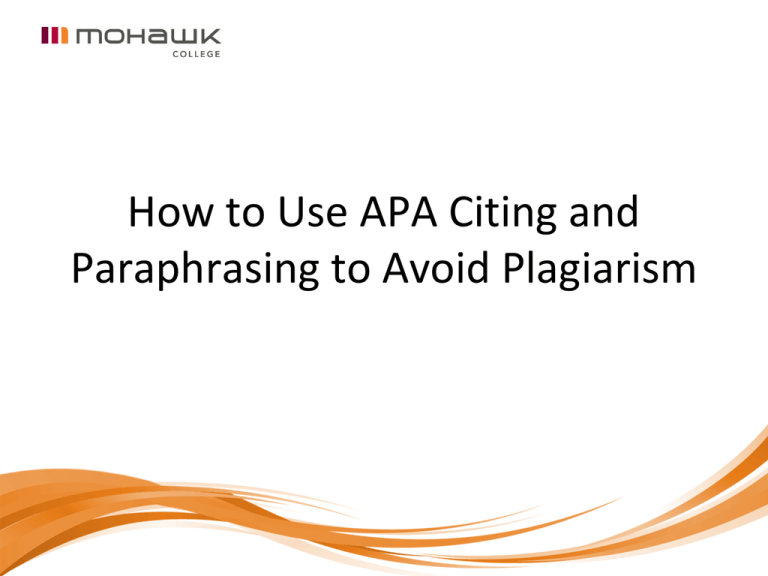
How to Use APA Citing and Paraphrasing to Avoid Plagiarism Is This Plagiarism? Copying a direct quotation into your paper, placing quotation marks around it, and crediting the source. NO! This is not plagiarism. How about this? Taking someone’s ideas or words, putting them into your own words, and crediting the source. NO! This is not plagiarism. It’s Paraphrasing! What is Paraphrasing? A paraphrase uses an author's idea, but expresses it in your own words, without the use of quotation marks. Just changing a few words from the original is plagiarism. Paraphrasing is permitted as long as you credit the source. Examples of Paraphrasing The original passage: Students frequently overuse direct quotation [when] taking notes, and as a result they overuse quotations in the final [research] paper. Probably only about 10% of your final manuscript should appear as directly quoted matter. Therefore, you should strive to limit the amount of exact transcribing of source materials while taking notes. Lester, James D. Writing Research Papers. 2nd ed. (1976): 46-47 A legitimate paraphrase: In research papers students often quote excessively, failing to keep quoted material down to a desirable level. Since the problem usually originates during note taking, it is essential to minimize the material recorded verbatim (Lester 46-47). Examples cont. An acceptable summary: Students should take just a few notes in direct quotations from sources to help minimize the amount of quoted material in a research paper (Lester 46-47). A plagiarized version: Students often use too many direct quotations when they take notes, resulting in too many of them in the final research paper. In fact, probably only about 10% of the final copy should consist of directly quoted material. So it is important to limit the amount of source material copied while taking notes. What is Quoting? A quotation uses exactly the same words and puts them in quotation marks. - If the quotation is more than 2 lines you should put it in a separate paragraph and indent it from both sides. “Leprosy was eradicated in the west by the end of medieval times” (Foucault 3). What is a Summary? A summary should contain the main points from the author's text. Don't forget to reference it with the author's family name, date of publication and page number. When Should I… …Paraphrase? …Quote? …Summarize? 1. The author’s words will be difficult for your reader to understand 1. Everything the author writes is important 1. Not all the author’s words are necessary e.g. If the author gives examples or explanations that you don’t need to put in your text 2. Your instructor wants to know if you understand the author correctly 2. The quotation will not make your text too long 2. If paraphrasing or quoting will make your text too long 3. You haven’t used many quotations already Common Knowledge Things that are considered “common knowledge” do not need to be cited. Examples: -Canadian Confederation began in the year 1867. -John A. Macdonald was Canada’s first Prime Minister. -William Shakespeare was born in England in the 16th Century. APA Formatting • List only the resources to which you have specifically referred, not those merely consulted • Place the page of references at the end of your assignment on a separate page titled References • Use authors’ names in the order they appear on the title page; do not alphabetize multiple authors of a source • Invert authors’ names and include only initials of first and middle names (i.e. Adam Smith becomes Smith, A.) Use an ampersand (&) to connect two authors’ names (e.g. Spacey, K., & Butler, G.) • Use commas to separate authors and an ampersand for the last author if there are three to six authors Formatting cont. • List the first six authors and then et al. if there are more than six • Begin the reference with the title of the work if no author is given • Arrange the list alphabetically; if there is no author and the title begins with a, an, or the, alphabetize by the second word • Begin each entry with a hanging indent (first line begins at the left margin and all other lines are indented ½ inch) • Double space within and between entries in your list of references • Capitalize only the first word in the title and the first word after a colon APA Quick Tips • An in text citation must point clearly to a specific source in References. • The in text citations and the References list work together. • The in text citation, a brief reference to a work, enables the reader to identify the source of an idea quickly and easily. Knowing the author’s last name (or the title) from the in text citation, a reader can locate the complete publication information for that work in the alphabetically arranged References list. Useful APA Tools/Resources • • • • • Communications Centre RefWorks TheBRAIN Library@Mohawk Publication manual of the American Psychological Association – 6th edition http://mohawkcollege.ca.libguides.com/content.pp?pid=135623&sid=1162051 References Documenting research sources using APA style. (n.d.). Retrieved from http://spark.mohawkcollege.ca/tutorials/PDFtutorials/APA_guide.pdf You note it, you quote it. (n.d.). Retrieved from http://library.acadiau.ca/tutorials/plagiarism/ Helpful Fact Sheets. (n.d.) Retrieved from http://www.mohawkcollege.ca/Discover/Help/CommCentre/helpfulFactSheets.html

